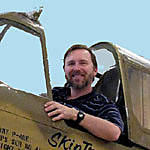
From Wikipedia, the free encyclopedia
Lightning
Lightning.inflight.arp.750pix.jpg
Lightning F.3 in 1964
Role Interceptor
National origin United Kingdom
Manufacturer English Electric
British Aircraft Corporation
First flight 4 August 1954 (P.1A)
4 April 1957[1]
Introduction December 1959
Retired 1988 (RAF)
Primary users Royal Air Force
Kuwait Air Force
Royal Saudi Air Force
Number built 337 (including prototypes)[1]
The English Electric Lightning is a supersonic jet fighter aircraft of the Cold War era. It was designed, developed, and manufactured by English Electric, who were subsequently absorbed by the newly-formed British Aircraft Corporation by government dictate. It was then marketed as the BAC Lightning. The Lightning was the only all-British Mach 2 fighter aircraft and was the first aircraft capable of supercruise. The Lightning was prominently used by the Royal Air Force (RAF) and the Royal Saudi Air Force (RSAF). Although it was the RAF's primary interceptor for more than two decades it was never required to attack another aircraft.
The Lightning is powered by two Rolls-Royce Avon turbojet engines in a unique staggered stacked installation in the fuselage. The Lightning was developed to intercept increasingly-capable bomber aircraft, and thus has exceptional climb, altitude, and speed; pilots have described flying it as "being saddled to a skyrocket".[1] This performance made the Lightning a 'fuel critical' aircraft meaning that its missions are dictated to a high degree by its limited range. Later developments provided greater range and speed along with reconnaissance and ground-attack capability.
Lightning F.6
Single-seat fighter (an improved longer-range variant of the F.3). It featured new wings with better efficiency and subsonic performance, overwing fuel tanks and a larger ventral fuel tank, reintroduction of 30 mm cannon (initially no cannon but later in the forward part of the ventral pack rather than in the nose), use of Red Top missiles. A total of 39 built (also nine converted from F.3 and 15 from F.3A).
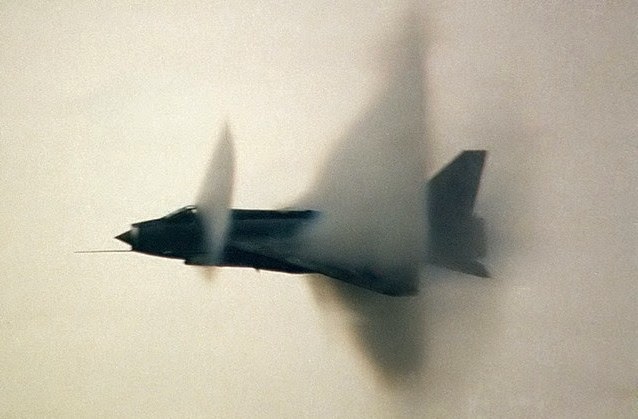
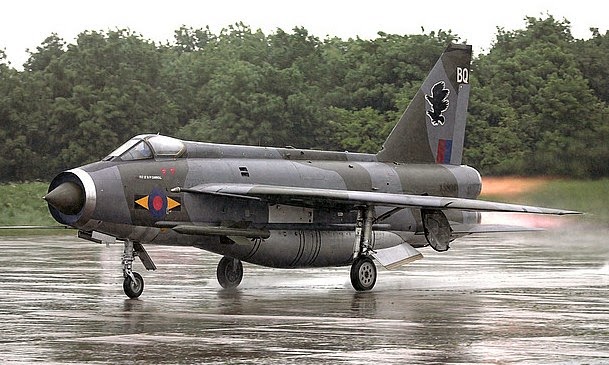
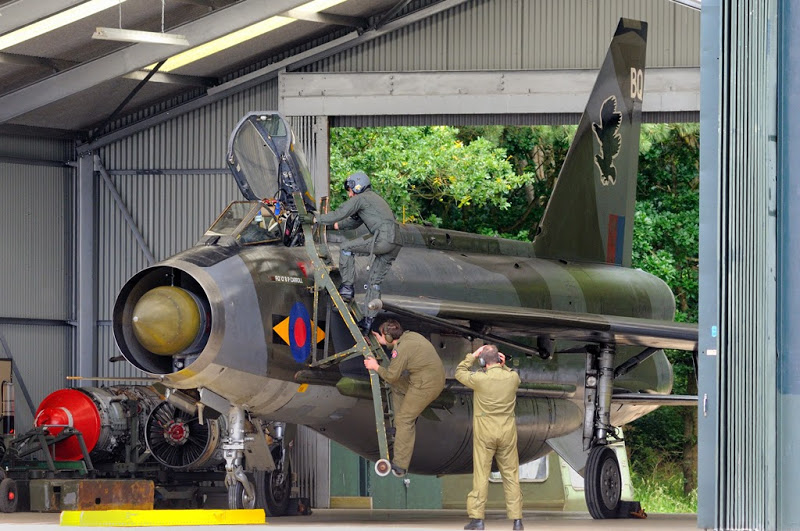
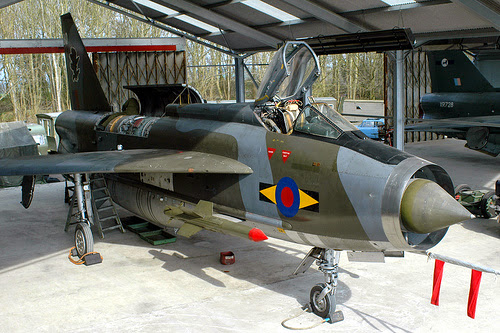


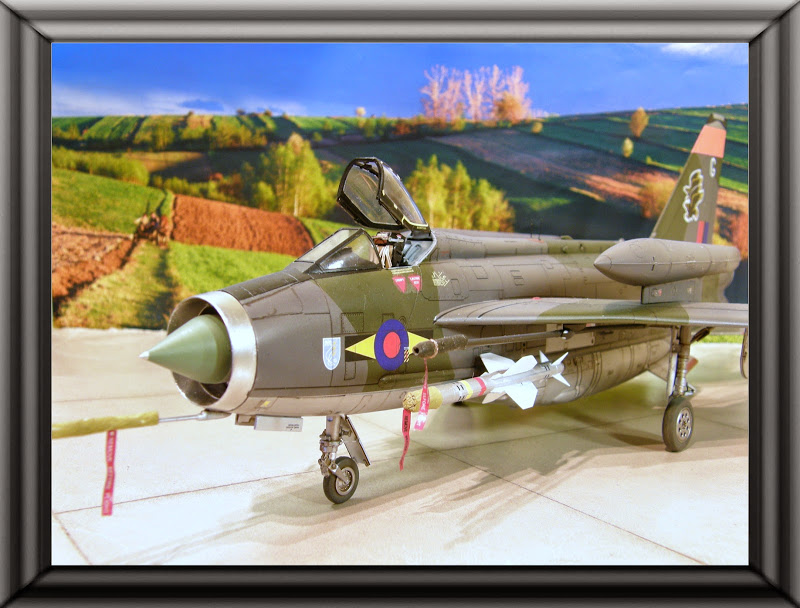
Teraz troszkę o modelu . Jest to stosunkowo nie stary model ,jakościowo podobny do prezentowanego tu Jevelina .Tak ze raczej nie było z nim kłopotów podczas klejenia Dodałem jedynie blaszki Eduarda z kokpitem ,oraz elementami dysz wylotowych i te tasiemki czerwone ostrzegawcze .I tyle .Do malowania użyłem farbek Gunze kl.C oraz werniksu Model Master Akryl półmat
Malowanie z 11 dywizjonu :













